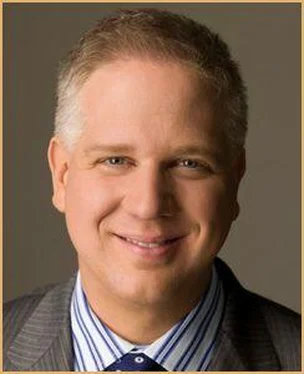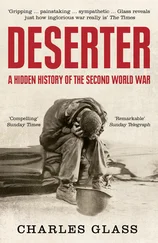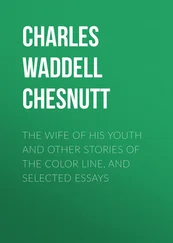Tesla took a deep breath. “You have a plan, don’t you, George?”
Westinghouse shrugged. “Not so much a plan as a partner. We’ll feign disinterest in the bidding, but in the end, we’ll be in the game.”
Thomas Edison had received a large amount of cash as part of the reorganization, but he ended up retaining only a 10 percent interest in the new company. That, Westinghouse believed, was a big mistake. One that he himself would never make. He wouldn’t sell his patents and he would never sell his companies. Ownership was control, and control was everything.
He suspected that Edison was about to learn a hard lesson about the ruthlessness of Wall Street moneymen.
West Orange, New Jersey
Late winter 1892
Thomas Edison was surprised to hear that Alfred Tate was downstairs. Tate, who had been serving as Edison’s personal secretary for nearly ten years, was supposed to be in New York City at Edison headquarters, not here at Edison’s West Orange estate.
“Send him up,” Edison said.
When Tate hurried into his private office, Edison cut right to the chase. “Why are you here, Alfred?”
“There’s been a merger.”
“Who?” Edison was suddenly gripped by a fear that Westinghouse had found a powerful ally.
“Edison General Electric and Thomson-Houston. It’s the second-largest industrial merger in history.”
Edison leapt to his feet. “My company? How could that happen without me knowing?”
“J. P. Morgan. He struck the deal.” Tate paused and looked toward the ground. “Sir, I don’t know how to tell you this, but Edison General Electric is the junior partner. Charles Coffin, the Thomson-Houston president, will be the president of the combined company.”
“No! This cannot be.” Edison felt faint. He sat back down and pounded his fist into a pile of papers on top of his cluttered desk. Damn Morgan . Edison’s first electrification was Morgan’s home and now the banker had repaid him by shoving him aside without even the courtesy of a telegram.
How could this happen? Edison thought—but the truth was that he knew how it happened. Even worse, he knew why: He had been maneuvered to relinquish control because of the threat posed by alternating current. The Kemmler electrocution had merely been a public exhibition of his failure to kill this competing technology. Edison salesmen were now clamoring for alternating current and that is what Thomson-Houston brought to the table. Dammit! His entire strategy to discredit alternating current had backfired. Instead of proving how unsafe it was, it proved the opposite: It was hard to kill a man with alternating current even when it was hooked directly up to his skull.
After a few moments of silence Edison had regained his composure. “What is the name of our new enterprise?” he asked Tate.
Tate hesitated. “General Electric.”
“At least they took my name.”
“No, sir.”
“I don’t understand—you said that the new company was called ‘Edison General Electric.’ ”
“No, sir. There is no ‘Edison’ anymore.”
Chicago
May 1893
Westinghouse was nervous. This was an unnatural emotion for him, but in a couple of minutes he would either rule the electrification world or be the biggest dunce in America. It all depended on the flip of a switch.
It had been a circuitous route to this moment. Westinghouse had publicly stated that his company would not bid on the electrification of the World’s Fair. With every other substantial electric company consolidated into General Electric, there was hardly any competition left.
When the bid box was opened, GE’s bid surprised no one: $1,720,000. But a second bid was found: $625,600 from a small Chicago firm. It was far less than GE’s, but the small company was taken seriously when Westinghouse Electric said it would back the proposal.
Westinghouse had, of course, not relied solely on the bid of a silent partner. In advance of the bidding he had dispatched Heinrichs to Chicago to whip up newspaper animosity toward the haughty New Yorkers. Heinrichs never had an easier assignment. The Chicago reporters hated the New York “electrical trust” and embraced Westinghouse as their champion from Pittsburgh, another industrial town familiar with being disparaged by the high-and-mighty Manhattanites.
Westinghouse, knowing the importance of the World’s Fair as a showcase for technology, had surreptitiously worked three years to win the bid. Now the war between him and Edison—between alternating and direct current—all came down to the flip of a switch.
• • •
It had been a long haul. There were business, legal, and engineering challenges. A big-city alternating-current plant might light up as many as ten thousand lights, but the World’s Fair was 160,000 lights , plus a good number of motors. All of this would be powered by twelve oil-fueled engines that had been installed only weeks earlier in Machinery Hall. No dirty coal smoke would rain down to stain the White City—the nickname given the main thoroughfare through the World’s Fair due to the white classical buildings that lined both sides of an immense reflecting pool.
As George Westinghouse stood on the bunted platform with other officiating guests, he fretted that it was all now out of his hands. President Grover Cleveland would press the gold and ivory telegraph key to light the World’s Columbian Exhibition, which celebrated the four-hundred-year anniversary of Columbus’s great voyage of discovery. Westinghouse would just stand there and smile.
Westinghouse didn’t realize he had been holding his breath until the lights came on with a roar from tens of thousands of spectators. It was magnificent. Fountains threw plumes of water a hundred feet into the air, flags unfurled, cannon and boat whistles assaulted the ears, and everybody yelled. The elegant White City instantaneously became the Bright City as it burst out of darkness. The gold dome of the Administration Building glowed; crowds on walkways and steps and lawns abruptly came into view; and the peristyle at the far end of the Great Basin seemed to glow from within. This entire spectacle came from Westinghouse lamps and motors powered by Westinghouse engines. All of it was made possible by the genius of Nikola Tesla and his alternating current.
Westinghouse felt himself smiling. It had all worked. The lamps, the motors, the engines, and the transmission lines. It was an entire electrical system fit for a city. Everywhere he looked there was glittering brightness and happy faces.
It was a new dawn, and a man-made one at that.
Coney Island, New York
Ten years later: January 4, 1903
In the decade since the founding of General Electric, Thomas Edison concentrated his talents on industries like mining and motion pictures. His own mines had not been profitable, but his patented techniques for things such as magnetic separation, blasting, conveying, and crushing had proven to be lucrative. His greatest enthusiasm, however, was for movies. He had watched their effect on audiences. One good film could alter the thinking of thousands of people.
The Edison Motion Picture Studio was making history by filming the first ever movie with a story. He was sure that film, The Great Train Robbery , would make money, but the movie he was about to make on Coney Island was far more important to him: It would be the first death ever captured on film.
Edison’s plan was to film an elephant being electrocuted with alternating current produced by a Westinghouse dynamo. The execution itself would be watched live by thousands of people at Luna Park, but the movie would have a much wider reach.
Edison knew that the war on currents was essentially finished. Even General Electric, the company he’d founded, had embraced alternating current. But he also knew that revenge was best when it was unexpected.
Читать дальше












